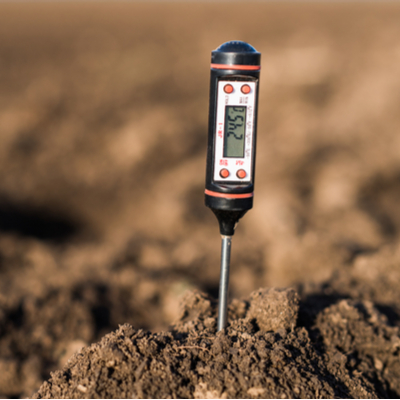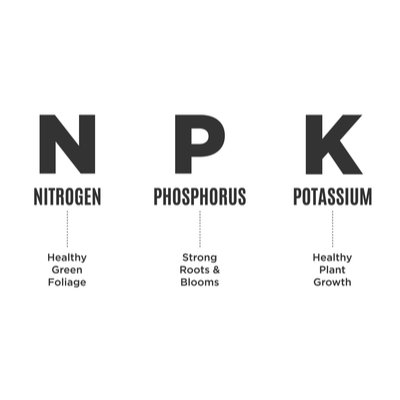When your turfgrass isn’t looking its best, and you’ve already tried fertilizer, it could be time to order a soil test. Soil testing is an easy way to learn what exactly is going on with your soil. Here’s why getting a soil test is so beneficial.
Why Soil Testing Is So Important
If you’re not familiar with the concept, soil testing is a detailed analysis of your soil composition. A trained lawn care technician performs it. They will remove about a dozen small samples of soil from different parts of your lawn. Doing so will give them an accurate result since the makeup of the soil may vary. By combining the data from all the samples, your lawn tech will then create a detailed report.
This report will note key things like:
- Which nutrients are low
- Which nutrients are high
- The pH level
- The presence of any pollutants or contaminants
Your Lawn Will Thank You
All lawns need fertilizer – but they need the correct amount and type of fertilizer. If you don’t know what those lacking nutrients are, you could actually damage your lawn. Nitrogen is crucial for grass growth, as we’ll see in a moment, but if you over-apply it, you could actually burn the grass! But you wouldn’t know you’re overdoing it because you don’t have the data in front of you. Soil testing in spring is the ideal time because your grass is getting ready for the growing season. By knowing what it needs to thrive, you can ensure a lush green lawn all season long through proper lawn fertilization.
Get Your Nutrients In Balance
When it comes to lawn care, nutrients fall into one of two categories: macro and micro.
Macronutrients
Three key elements are the gold standard for all fertilizers: nitrogen (N), phosphorous (P), and potassium (K). They all aid your grass with performing vital functions. If you’ve ever purchased fertilizer at a nursery or hardware store, you may have noticed that there are three numbers. 3-1-2 or 4-1-2, for example. This is the proportion of nitrogen, phosphorous, and potassium in that order.
Nitrogen
Nitrogen fertilizer helps with rapid growth, a must-have in the spring. It also helps with leaf development, chlorophyll formation, and photosynthesis.
Phosphorous
This nutrient is essential for early root growth and aids in seed formation. It also helps lawn green up faster, so if you’re tired of looking at the brown lawn winter left, phosphorous is the ticket to a green lawn.
Potassium
Potassium makes your grass hardy. Keeping a balanced potassium level in your lawn will help your grass regulate its processes, increase its tolerance to stress and drought, and, like phosphorous, potassium aids with root growth and stem development.
Micronutrients
Micronutrients are important elements in your lawn, but they aren’t needed in large quantities.
In the same way, humans need iron but not too much, so too does grass need these nutrients:
- Boron
- Chlorine
- Copper
- Iron
- Manganese
- Molybdenum
- Nickel
- Zinc
These all assist with chlorophyll production, photosynthesis, DNA synthesis, disease resistance, sugar translocation, and more.
Contaminant Alert
There’s no knowing what your soil may have been exposed to over the years.
Some common contaminants that show up on soil testing include:
- Chlordane
- Arsenic
- Lead
- Heavy Metals
- Polycyclic aromatic hydrocarbons (PAH’s)
- And other chemicals
Determine The pH Level
All the fertilizer in the world won’t help your lawn if the pH balance is out of whack. While a slightly acidic lawn is not bad, in fact, this soil is good for many plants. If your lawn is too far on the acidic side, it will flat out reject any fertilizer. So instead of wasting money, perform a soil test! If your lawn’s pH is too far to the acidic side of the scale, an application of lime will balance it.
This is perhaps the most important information you’ll get out of your report. If you’re testing soil for pH, and it’s out of balance, your lawn may not be receptive to the nutrients and fertilizer that is applied. There’s no point in laying down fertilizer if your lawn won’t absorb it. If that’s the case, you’re literally throwing away money. To correct an overly acidic lawn, ask your lawn care professional about a lime application. If your soil is too alkaline, you can add sphagnum peat, elemental sulfur, aluminum sulfate, iron sulfate, acidifying nitrogen, or organic mulches to correct the imbalance.
Find Soil Sampling Near South Bend
The lawn experts at HydroSeed Incorporated offer a variety of add-on services in addition to our lawn maintenance offerings. These include soil sampling to discover what nutrients your lawn is lacking, what it has enough of, and any contaminants you should be aware of. To learn more about the benefits of soil sampling, or to schedule an appointment, give us a call at 800-468-LAWN or contact us online. To learn more about lawn fertilization, restoration, and installation, be sure to check out our monthly blog page. You can also connect with us on social: like us on Facebook and subscribe to our Youtube channel.

